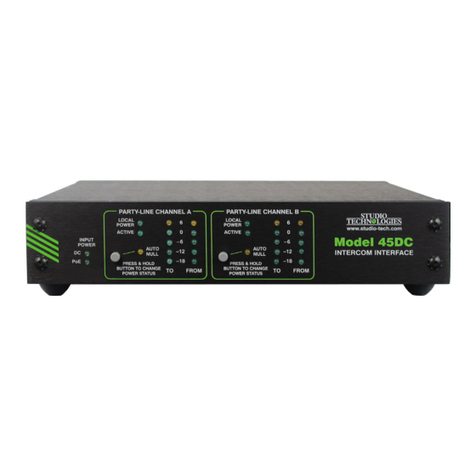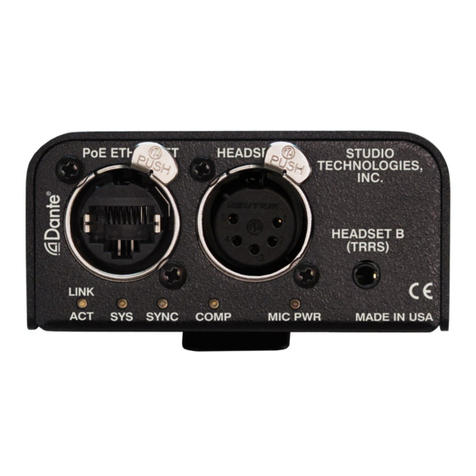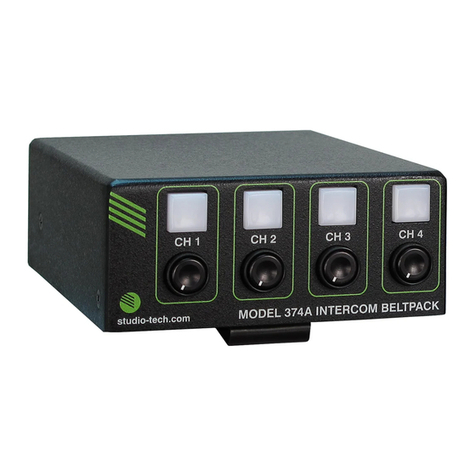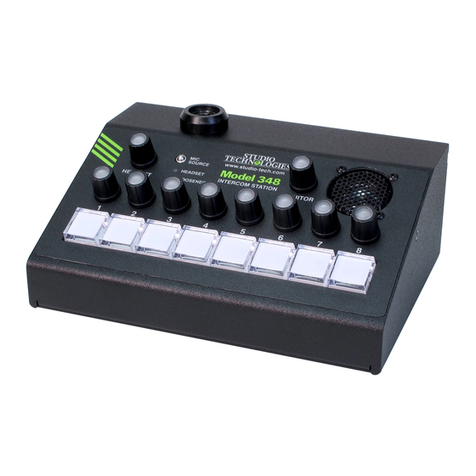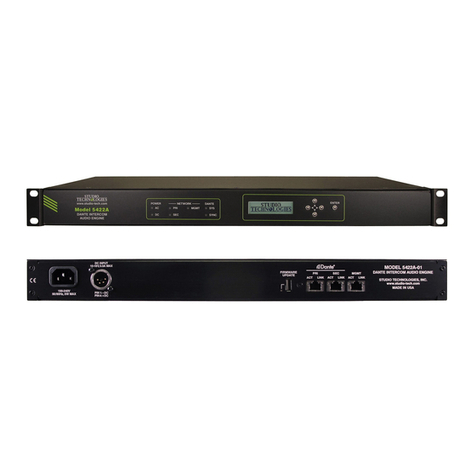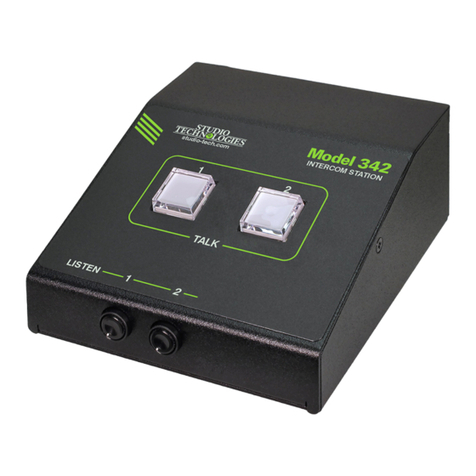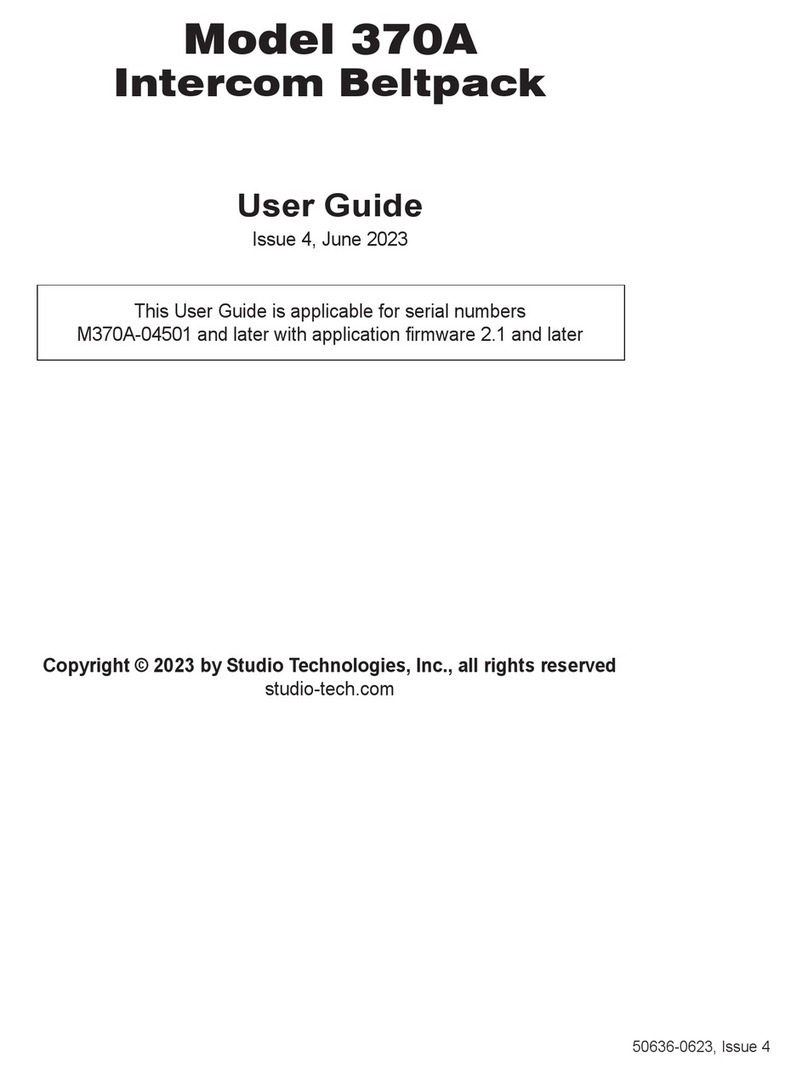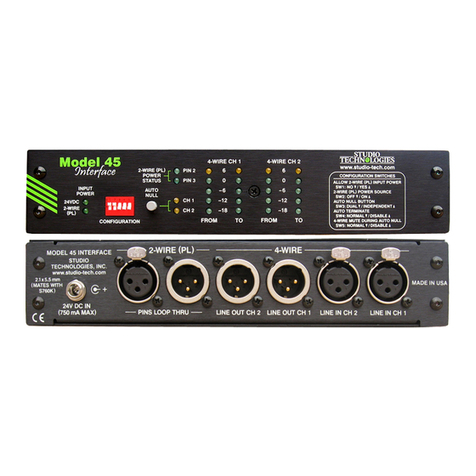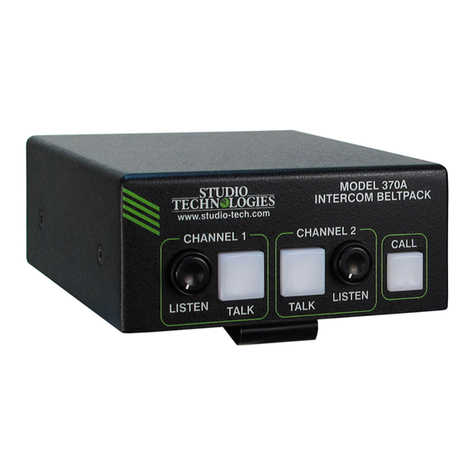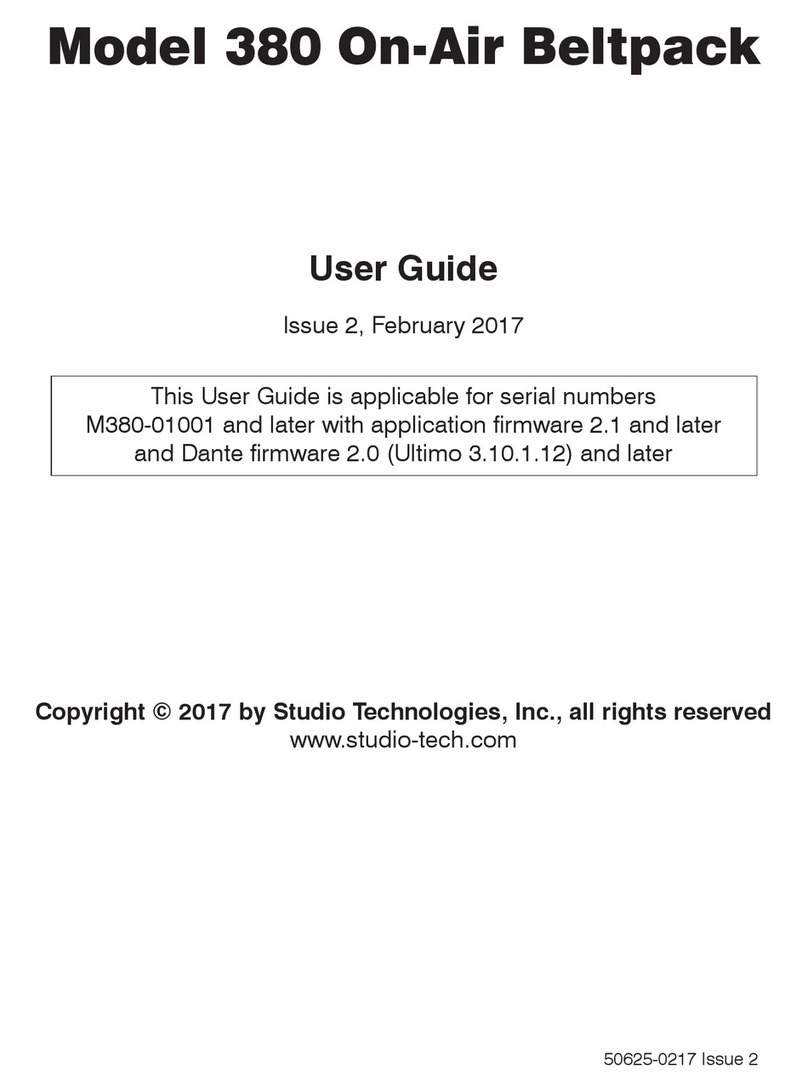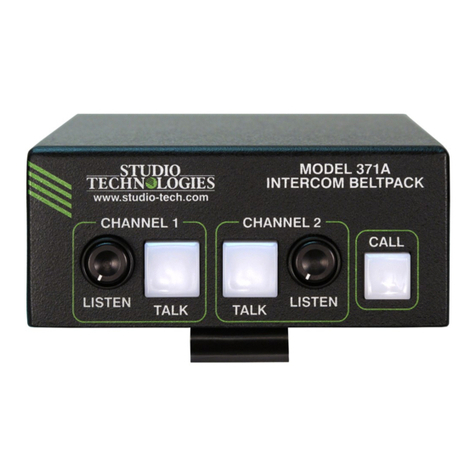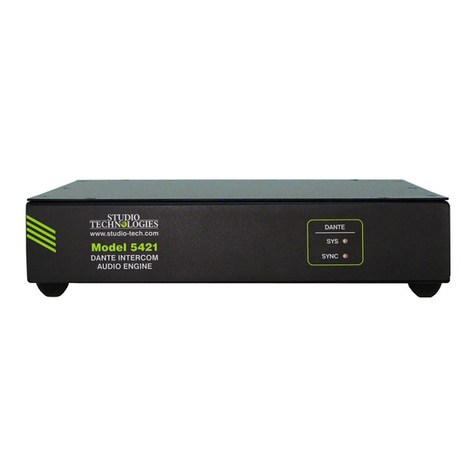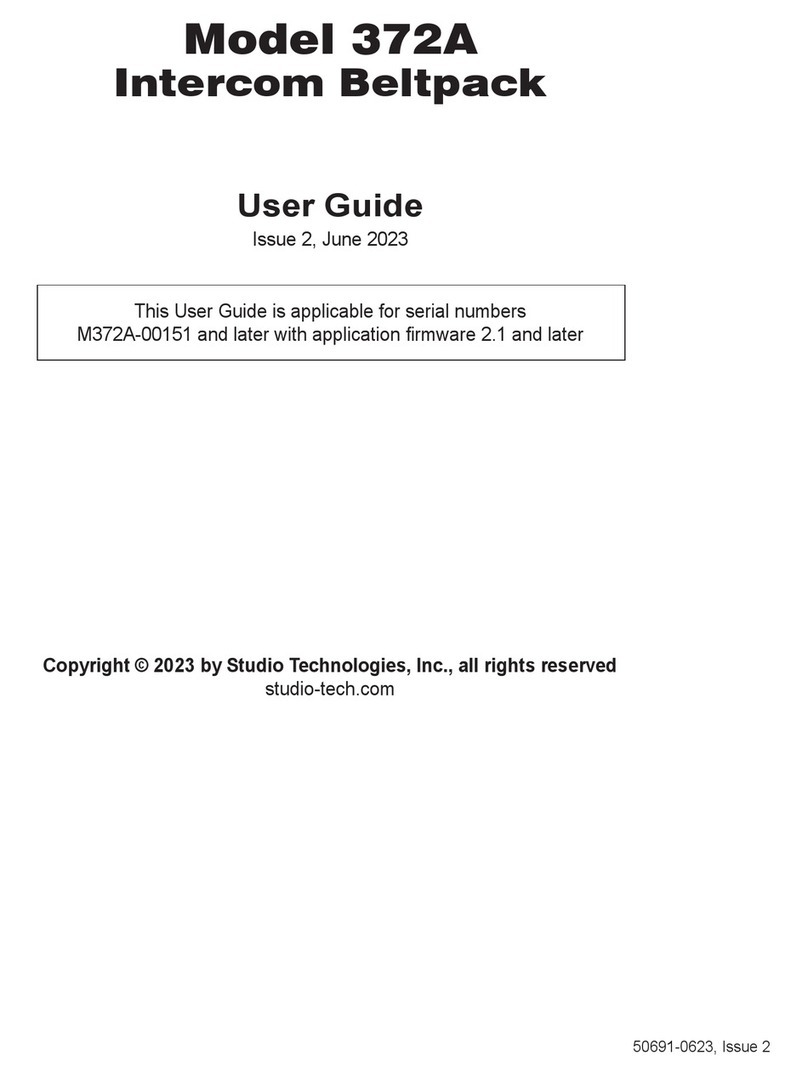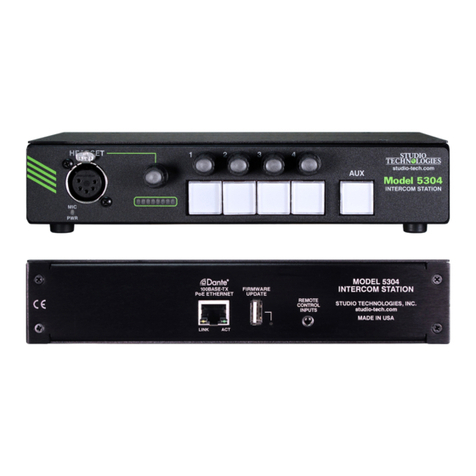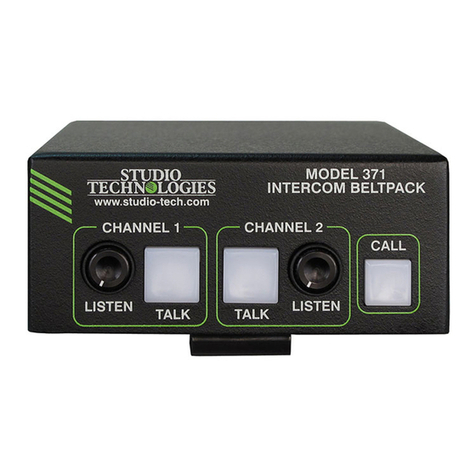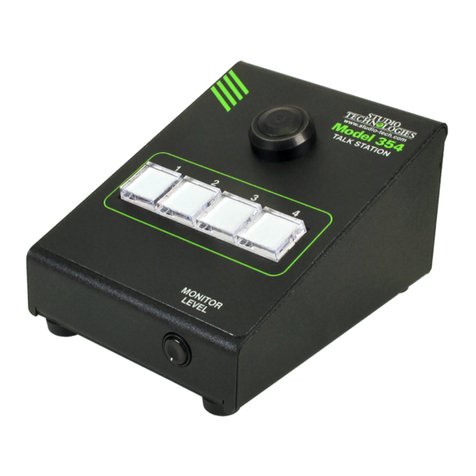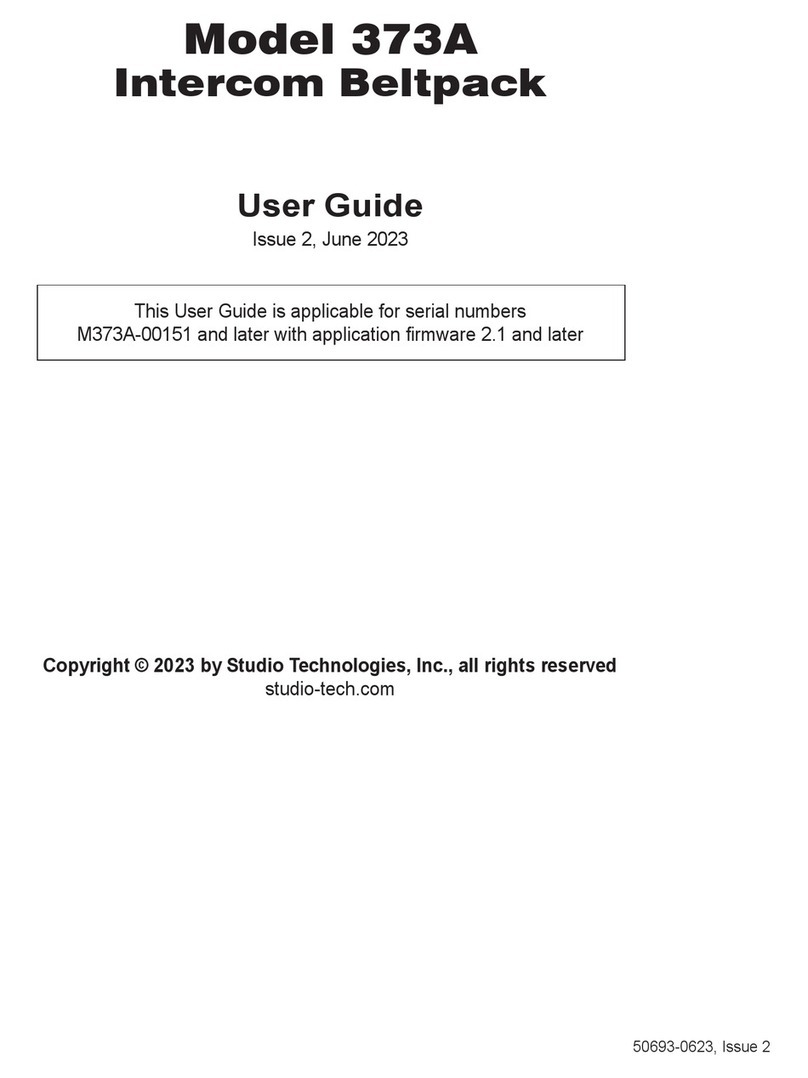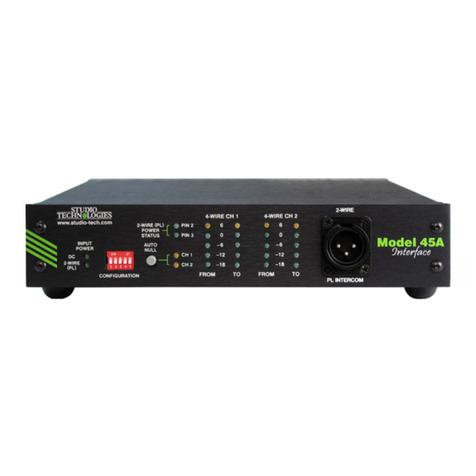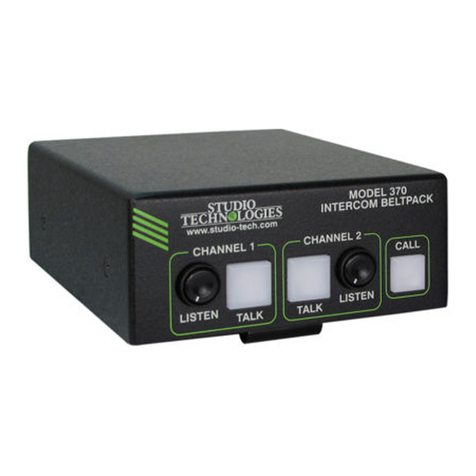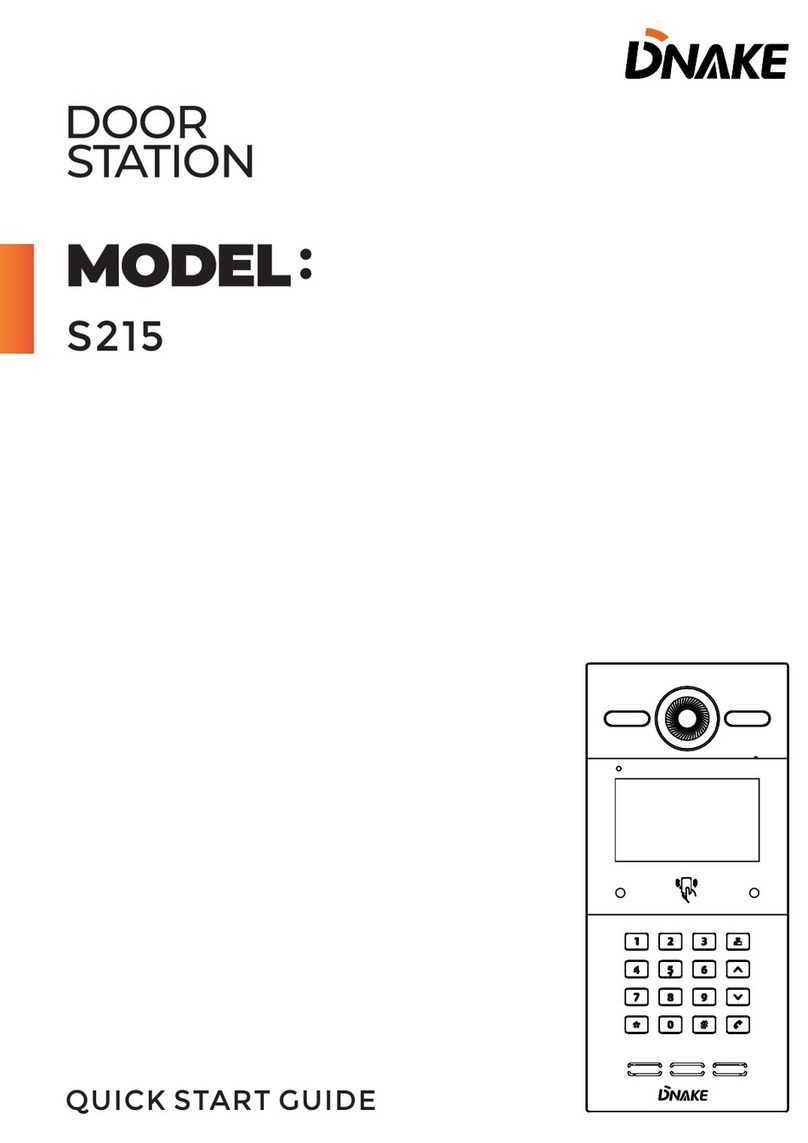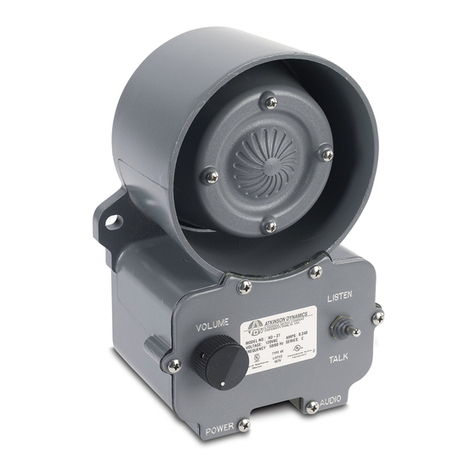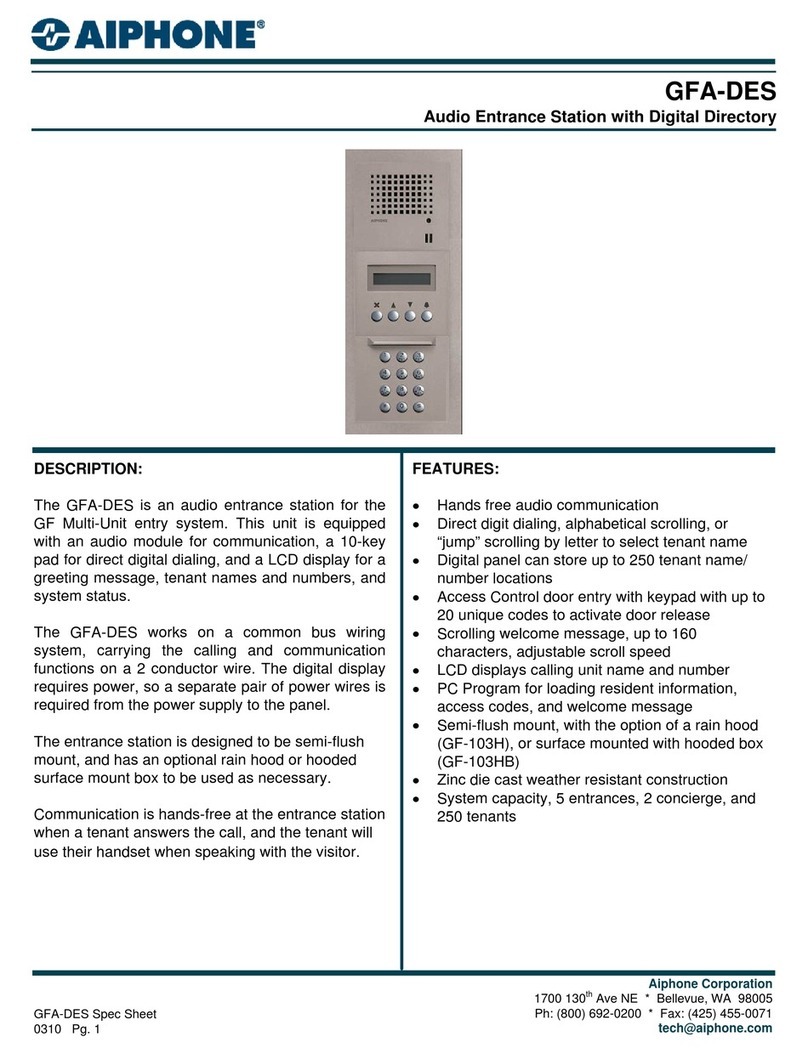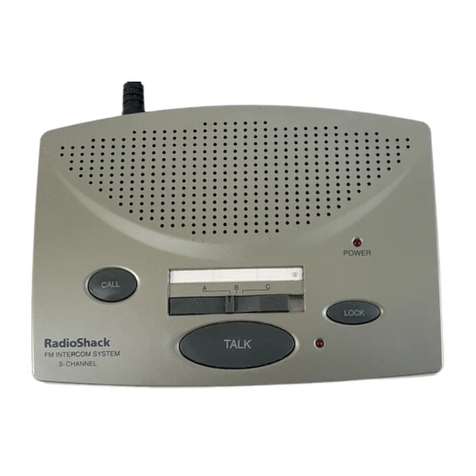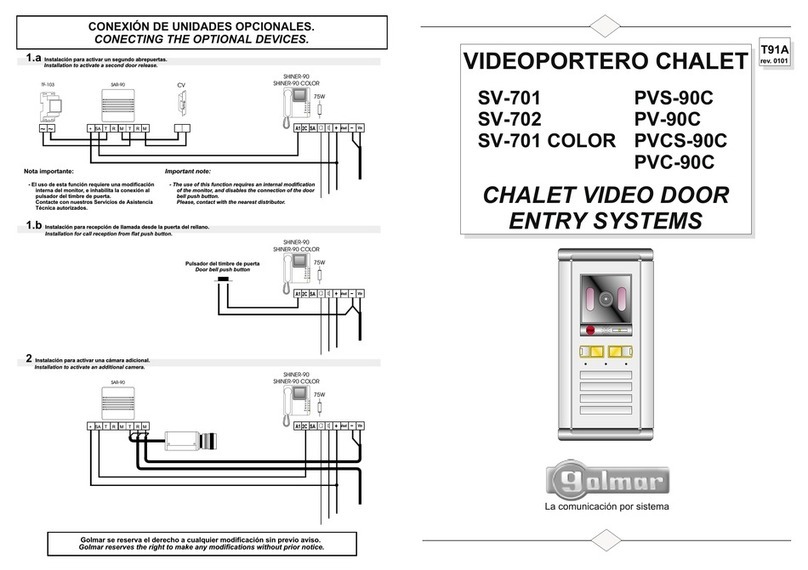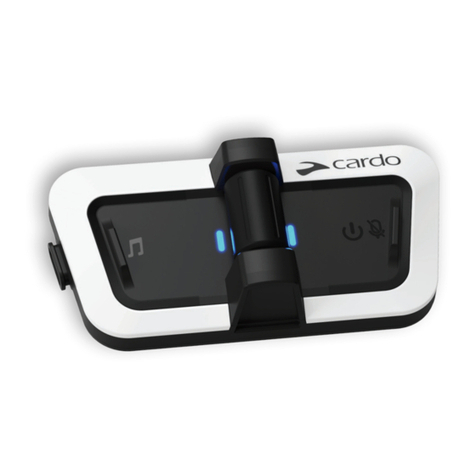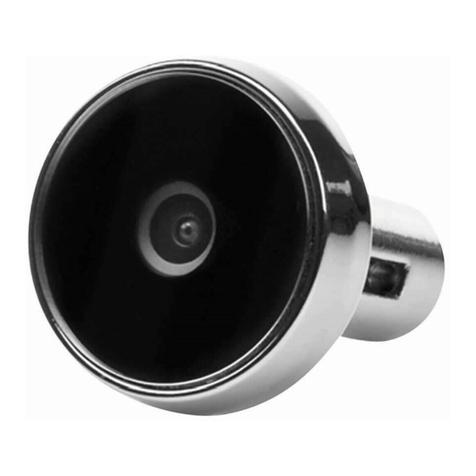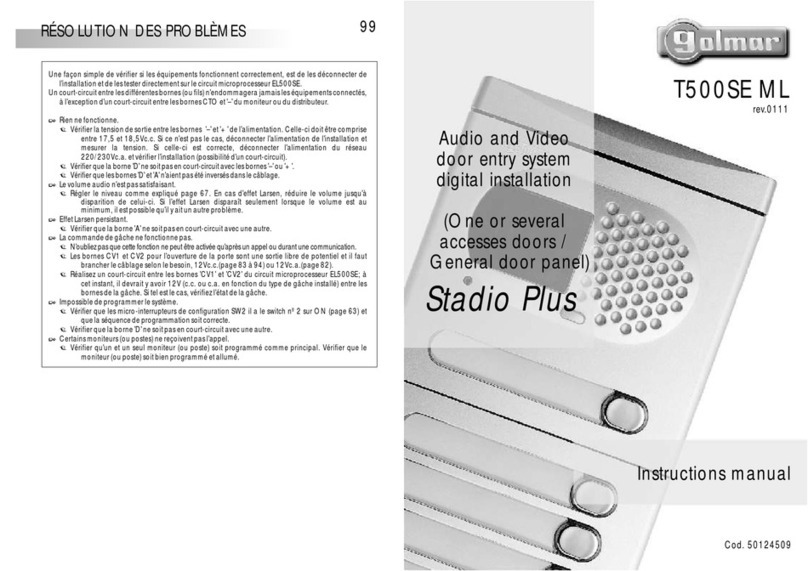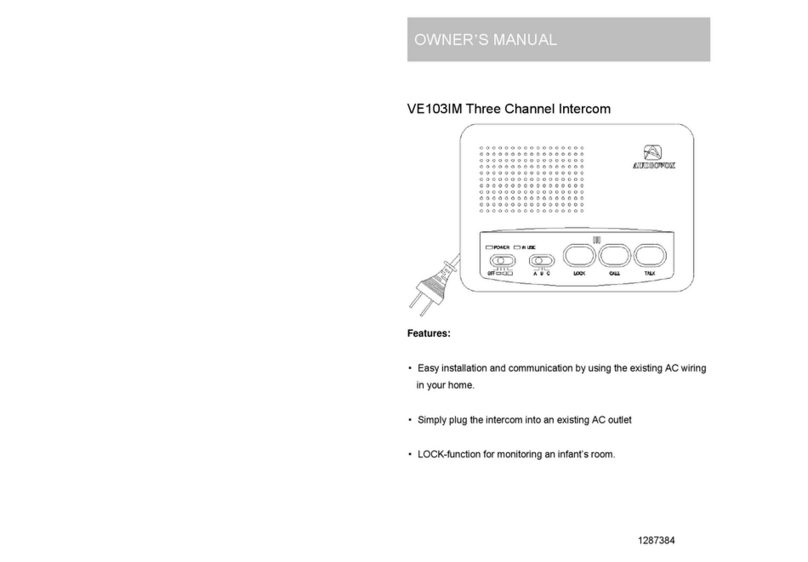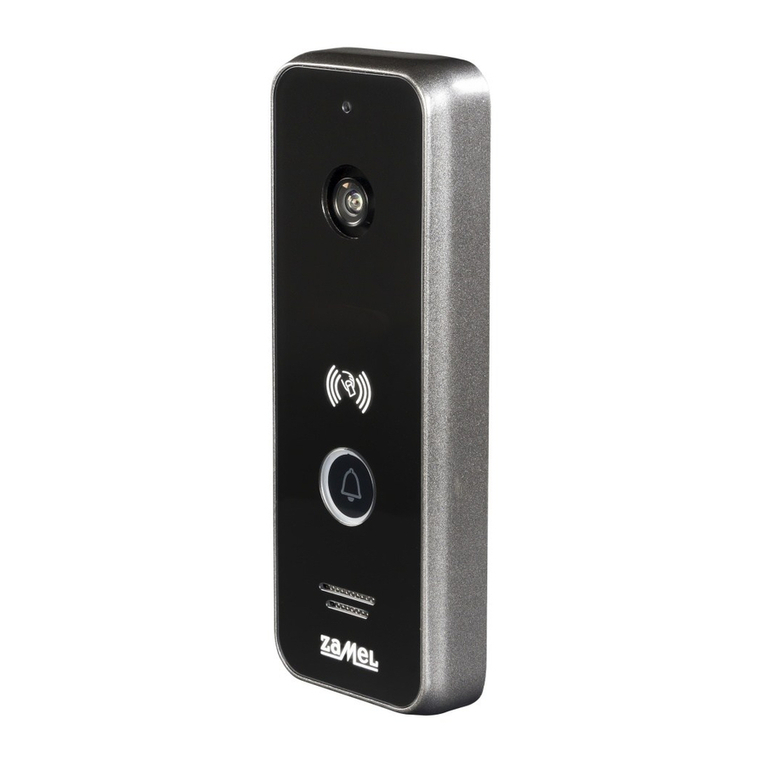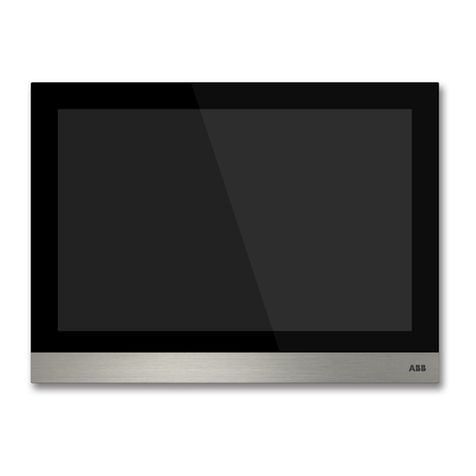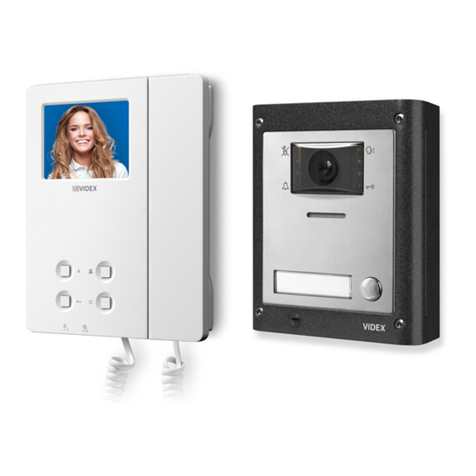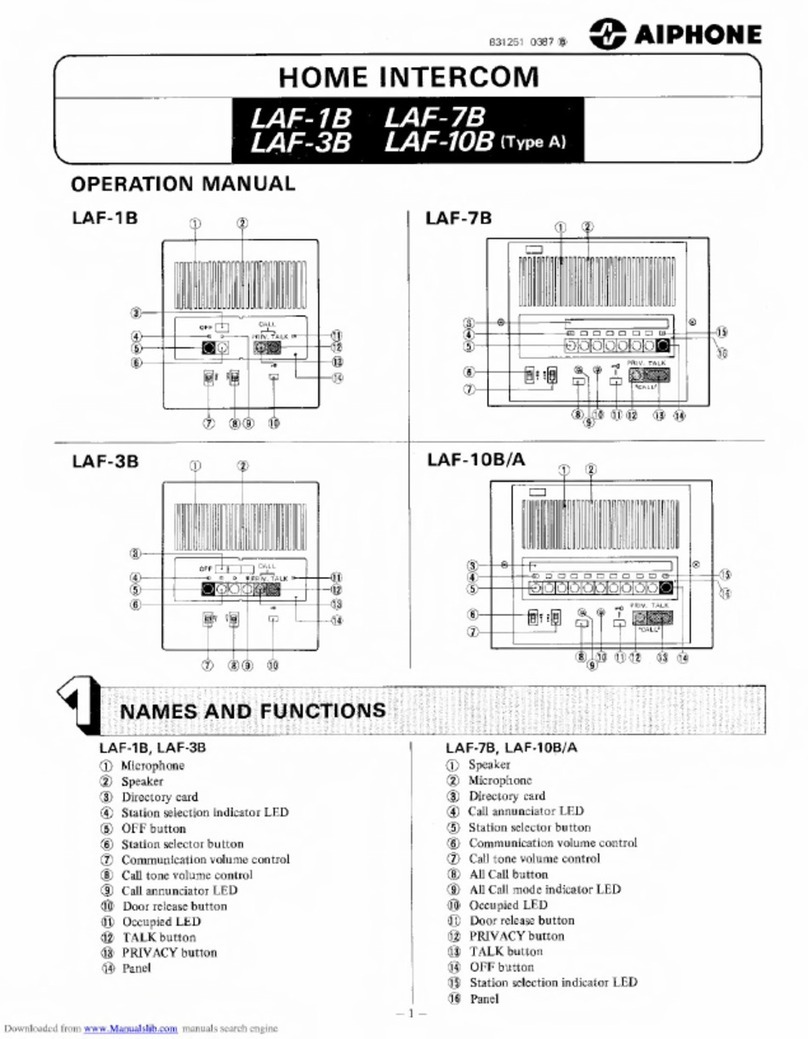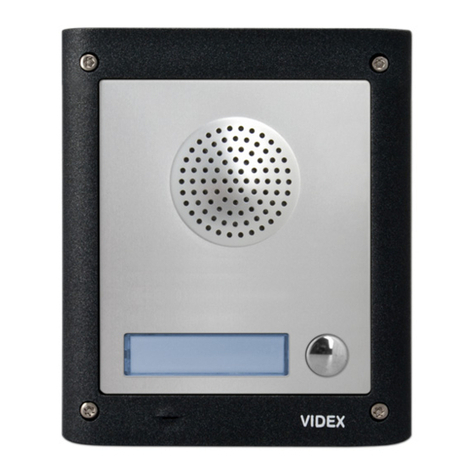
Issue Preliminary 2, November 2019 Model 348 User Guide
Page 10 Studio Technologies, Inc.
MODEL 348
INTERCOM STATION
Microphone Input – Headset Mic Gain
Choices are 26 dB, 32 dB, 38 dB, 44 dB,
and 50 dB.
To match the requirements of a microphone
associated with a headset, the gain of the
microphone preamplifier can be selected
from among five choices. The selected gain
is applied no matter if the headset is con-
nected using the Headset A or the Headset
B connector. The compressor active LED,
located below the Headset A connector, can
act as a guide when setting the microphone
preamplifier gain. When a voice signal at
a normal level is present on the connected
headset’s microphone the compressor ac-
tive LED should light intermittently. If, for
example, it rarely lights and the gain is set to
38 dB, it might be a good idea to change the
setting to 44 dB. If the compressor LED is lit
fully during normal talking and the gain is set
for 44 dB or 50 dB, a change to one of the
lower values might be warranted. There’s no
“hard and fast” rule as to which gain setting
is appropriate. But unless otherwise indicat-
ed, 38 dB is typically a good initial choice for
a headset that uses a dynamic microphone
while 32 dB would be appropriate for a head-
set that includes an electret microphone.
Microphone Input – Gooseneck Mic Gain
Choices are 12 dB, 18 dB, 24 dB, 30 dB,
and 36 dB.
When the gooseneck microphone is selected
as the Model 348’s active microphone input
source the gain of the microphone pream-
plifier will operate from among five configu-
rable choices. The compressor active LED,
located adjacent to the Headset A connector,
can act as a guide when setting the goose-
neck preamp gain. When a voice signal at a
normal level is presented to the gooseneck
microphone the compressor active LED
should light intermittently. If, for example,
the LED rarely lights and the gain is set to
18 dB, it might be a good idea to change the
setting to 24 dB or 30 dB. If the compressor
LED is lit fully during normal talking and the
gain is set for 30 or 36 dB, a change to one
of the lower values might be warranted.
Headset – Sidetone Level
Choices are Off, Low, Medium Low,
Medium, Medium High, and High.
As a user confidence signal, audio from the
selected microphone source can be routed
to the left and right headphone channels of
the headset interface. Sidetone audio can be
present whenever an applicable button func-
tion is active on any or all of the unit’s eight
channels. An applicable function is one that
uses either the headset or the gooseneck
microphone. These include Talk, Talk with
18 kHz Tone, and IFB. There is no definitive
sidetone level setting. One that provides the
user with a sufficient amount of their own
talk audio such that they are comfortable
should be sufficient.
Headset – Dim
Choices are 0 dB, 6 dB, 12 dB, and 18 dB.
This headset dim function allows the output
of the two headset output channels to be
“dimmed” (attenuated or reduced in level)
in certain circumstances. The function is
provided for special applications where the
headset’s left and right headphone outputs
are connected to an external amplifier or set
of amplified speakers. Normally when a talk
function is active on one or a combination
of the eight channels the level of the head-
set’s headphone output channels would not
change. As such, the default dim value has
been selected to be 0 dB. But if an adapter
cable was fabricated and the headset’s
headphone output channels were connected
to audio playback devices that presented




















